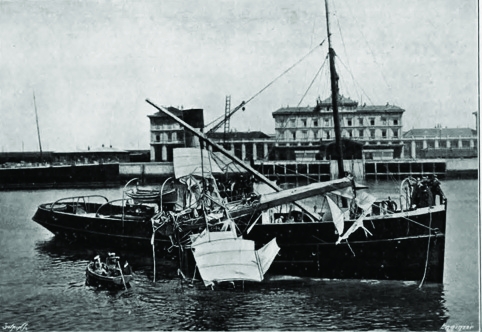One skill that all Engineer reporters must quickly develop is an ability to understand the unique language of each engineering sector: a distinctive and often impenetrable patois of buzzwords, acronyms and confusing terminology that can render the most basic concepts incomprehensible.
But it’s not always been this way. The Engineer archive frequently shines a light on these sectors before they’d had a chance to evolve their own vernacular. At the dawn of the automotive industry, before cars were cars, reporters marvelled at the “Horseless carriage”. The bicycle was – and maybe still should be – the velocipede and, as an Engineer article from the very beginning of the aviation sector reminds us, pilots were aeroplanists.

The article in question – from July 23rd, 1909 - was reporting on the recent attempt by French aviation pioneer, Hubert Latham, to make the first cross-channel aeroplane crossing.
Latham attempted his crossing in monoplane dubbed Antoinette IV that had been designed by French inventor Leon Levavasseur. The aircraft was equipped with a 50 horsepower eight-cylinder petrol motor equipped with a novel cooling system that used the radiator as part of the structure of the aircraft.
At a quarter to seven, having made all the necessary preparations, Mr. Latham ascended in his machine
‘Sangatte, the French terminus of the abandoned Channel Tunnel, was chosen as the starting point, the aeroplanist intending to land at Dover,’ wrote The Engineer. ‘At a quarter to seven, having made all the necessary preparations, Mr. Latham ascended in his machine, and after executing a wide circle round Sangatte, headed for Dover.’
After travelling around eight miles, the article reports that the “machine was seen to be gradually descending in a long straight line to the surface of the water” where it eventually landed and was rescued by a torpedo boat that was following Latham’s progress.
Though ultimately unsuccessful, The Engineer wrote that “sufficient was done to demonstrate the possibility of success and the suitability of Mr. Latham’s type of machine for this particular purpose.” What’s more, Latham did at least earn the distinction of becoming the first person to land a plane on a body of water.

Describing the technical challenges of flying overseas - ‘there are, more or less always, over any large stretch of water vertical currents of air which must naturally render the condition of the problem of flight somewhat more complicated than in their absence.’ As for the cause of the accident, Latham put it down to the affect of salt in the air on the carburettor.
Latham made a second unsuccessful attempt a few days later, but had by then been pipped to the post by Louis Bleriot, who made the first successful crossing of the channel just days after Latham’s initial attempt.





Nanogenerator consumes CO2 to generate electricity
Whoopee, they've solved how to keep a light on but not a lot else.